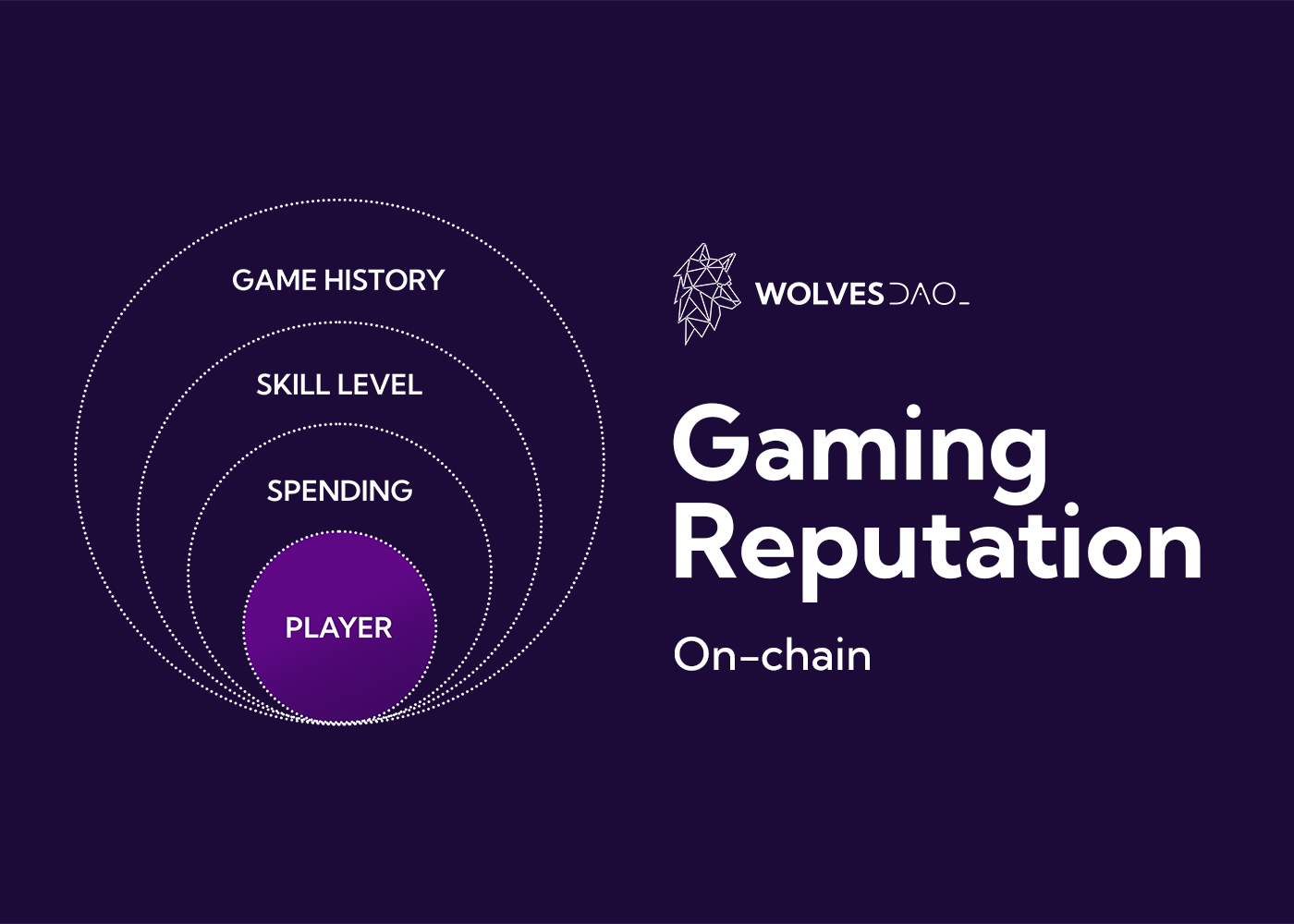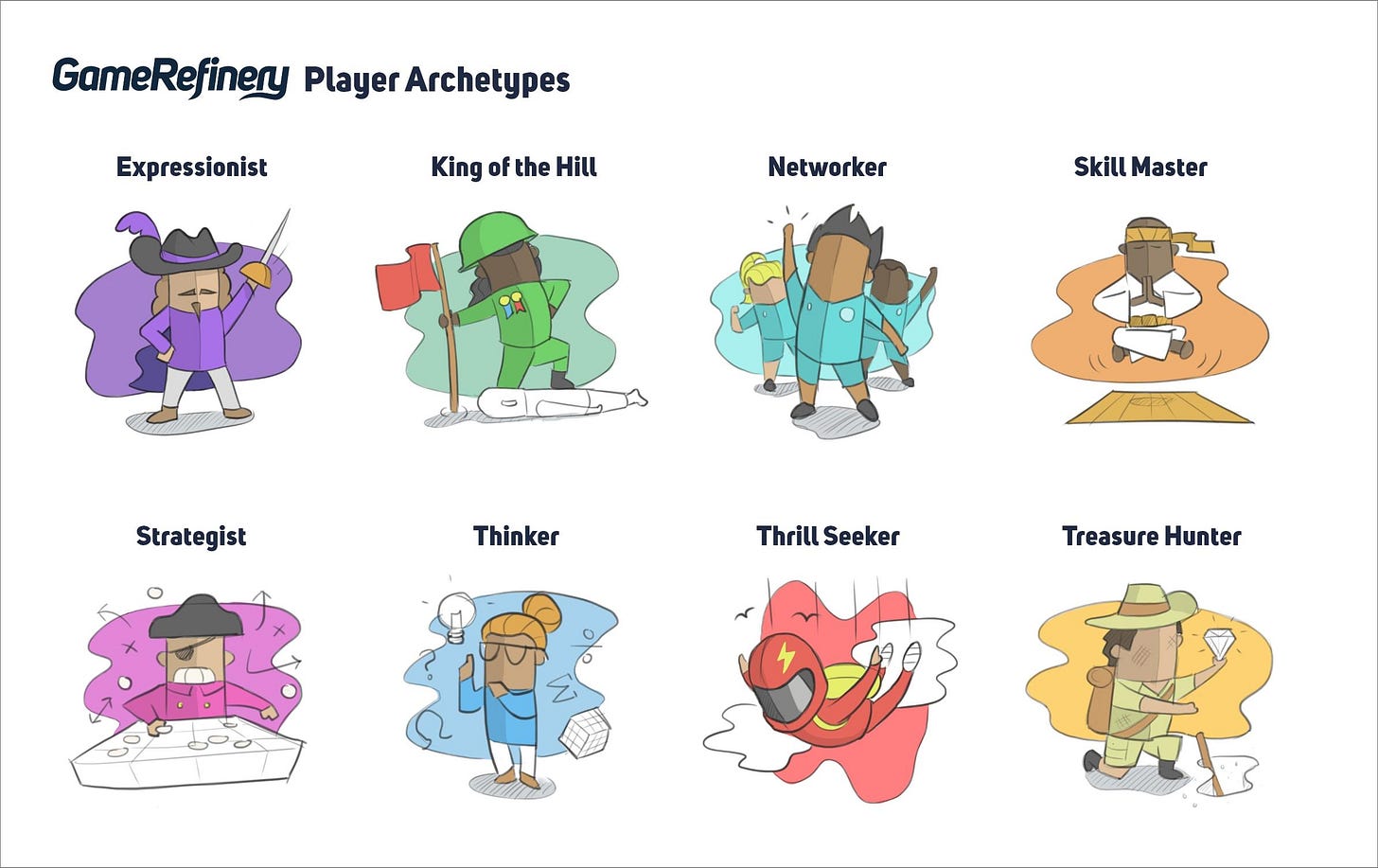The Wolves DAO Files #22: Are On-chain (Gaming) Reputation Systems the Future of UA?
Exploring the benefits, use cases, and challenges associated with on-chain reputation systems.
On-Chain Gaming Reputation
Numerous companies, such as GGquest and Clique have ventured into creating an on-chain gaming reputation (OGR) system. But what exactly does this concept entail? At its core, an OGR system aggregates data from various games and gaming platforms, encompassing both Web2 and Web3 titles, to construct a comprehensive profile of a player's achievements, interactions, gaming and spending behavior, and history.
In contrast to the limited player data confined to individual games or platforms, an OGR system offers a holistic perspective on a gamer's profile.
In our recent discussions, the Wolves explored the potential advantages, use cases, and challenges associated with these innovative gaming reputation systems, discussing their potential role in shaping the future of gaming.
Improved User Acquisition (UA)
The primary utility of an OGR system lies in the creation of comprehensive player datasets, which can significantly aid gaming studios and publishers in the more efficient identification of their target audiences, ultimately enhancing user acquisition efforts. In traditional paid game advertising, studios or publishers typically engage ad-tech companies (e.g., Facebook) to display advertisements to an audience most likely to engage with specific content, be it reading, watching, playing, or purchasing. Facebook, for instance, relies on data related to a user's location, payment history, interests, and device information to compile these datasets.
However, what's often missing is data concerning a player's gaming activity on platforms like Steam, and Xbox achievements, or spending habits within on-chain games like Pirate Nation. Herein lies the strength of an OGR system: it can amass highly game-specific data and eliminate the intermediary role played by ad-tech companies.
These companies, which are establishing social gaming identities, are constructing platforms that serve as meeting points for game studios/publishers and players. Leveraging this data, studios/publishers can identify particular user groups (such as players with a strong reputation or high spending power) and devise tailored incentives to entice these potential customers into their games. Instead of making payments to ad tech companies, gaming firms can reward or motivate users with NFTs and/or tokens.
The availability of more extensive datasets enables finer-grained targeting with regard to player behavior. Game companies can so aim at specific aspects like engagement, genre preferences, and, on a deeper level, in-game conduct. In turn, this empowers studios to create highly detailed player profiles and discern the types of content that resonate most with each individual player.
Overall, reputation systems will make life easier (and cheaper) for companies to do UA. It makes data cheaper and more accessible. As the recorded data will be gaming-related and grow into a very broad dataset with a high density of information, this will enable deeper analysis and a more tailored approach, resulting in a more efficient UA using targeted ads for example.
Player + Studio Benefits
‘Proof of Play/Skill’
One primary advantage is that players can utilize their gaming reputation to showcase the achievements they've unlocked in various games and exhibit their gameplay data or specific skills for various games. A game reputation can be leveraged as a 'proof of play' or a demonstration of skill, enabling them to join a guild in World of Warcraft (WoW) or gain recognition as a skilled player by a competitive CS:GO team in the world of esports.
A previous WoW guild leader can show his reputation to enter new guilds or be recruited.
'Proof of play/skill' can serve as a method for identifying proficient beta testers for games within similar genres or those they are more experienced in, ultimately resulting in more relevant and valuable feedback.
Holistic Player Profiles
Furthermore, an OGR system should encompass a customizable player profile reminiscent of a Steam profile. It enables players to personalize their page with various themes and items, as well as determine which achievements they wish to highlight the most. Catering to the player's desire for social expression and the ability to showcase their accomplishments, fostering awareness among fellow players and encouraging the adoption of a comprehensive gaming profile.
Personalized Content
Drawing from a player's in-game history, content can be further personalized. A reputation system could recognize specific playstyles across different genres and suggest a particular character to the player based on this data. As a result, both players and studios benefit, the player has a more enjoyable experience, and the studio improves its Day 1 retention rate.
A bit further out, personalization will become deeper, more granular, and scalable with the development of AI. We are currently still at the stage of localization (region-based personalization).
Games as a Platform (GaaP)
As game studios increasingly make their gameplay data available on the blockchain, it will enable players and developers to craft user-generated content (UGC) on this foundation.
Presenting a compelling incentive for them to share this data with the public. By expanding data accessibility in this manner, and advancing beyond the conventional Games as a Platform (GaaP) concept, new avenues for player-driven growth are unlocked:
Users may run a tournament event for all players who finished a certain mix of missions, verified by on-chain achievements (UGC lights, player-driven liveops).
Create a deck builder tool (complementary ecosystem tools)
Build a minigame that taps into the state of the main game. All of this enhances player retention and therefore, revenue.
Associated Challenges
New and Unfamiliar Tech
While the theoretical advantages for both game studios and players may appear compelling when considering the adoption of an OGR platform, the practical application has yet to be substantiated. Achieving this hinges on two pivotal factors: a) attaining a substantial scale to accumulate a critical mass of players and their data, and b) enlisting a sufficient number of studios to participate in incentivizing players.
From a player's standpoint, motivating users to link their Steam or Epic accounts, or share their API keys, might not always be straightforward, particularly if the platform lacks a well-established reputation for trustworthiness. Gamers invest countless hours and resources into these gaming platforms, amassing achievements, and collecting in-game items. As such, the potential risks involved in sharing their data need to be carefully considered.
Although I’m not convinced it’s going to look like the reputation systems we have currently, in fact I think it’ll be a backend data aggregation tool like in web2 and not something most gamers will care a lot about (until they do).
Moreover, it's worth noting that every player desiring to receive incentives like WL allocations, NFTs, or tokens must possess a cryptocurrency wallet, potentially serving as a hurdle to entry unless OGR platforms incorporate custodial wallet options.
On the other side of the equation, for studios granting platforms access to their data, which consequently leads to more data becoming public, potential challenges arise. These encompass concerns about competitors seizing opportunities presented by this data sharing. Convincing studios to embrace this approach can be challenging unless a clear demonstration is provided that this model can effectively reduce costs or enhance user acquisition.
Hence, the pivotal role of education in the value proposition of this new system becomes apparent, a vital component in the strategy for mass adoption.
Alternative Options
Another critical factor to consider when persuading studios to adopt an OGR system is the feasibility of achieving similar outcomes within the Web2 framework. It's anticipated that the bulk of a player's gameplay data will originate from conventional gaming platforms like Epic Games and Steam, which are often deemed as more extensive and dependable sources of data. They tend to provide a more accurate reflection of a player's behavior compared to their Web3 counterparts.
In contrast, on-chain data can offer more profound insights into players' spending habits, especially for fully on-chain games. However, the adoption of entirely on-chain games is gradual and arguably less dependable than Web2 play data due to the incentivized nature of blockchain gaming. Consequently, the advantages derived from blockchain data might not outweigh the potential reservations studios may have regarding this technology, making a Web2 solution a more attractive choice.
It's even conceivable that platforms like Steam could explore a comparable model, permitting studios to showcase their games to a highly relevant audience in exchange for Steam credits or in-game items.
Additionally, within the Web3 landscape, opportunities abound for targeting specific wallet holders.
There are already many major brands such as Nike, Starbucks, Adidas, and more that you can track their wallets if you want to do some sort of target marketing towards these users if you were a competitor or startup. Think Dunkin Doughnuts targeting the wallets of the Starbucks Odyssey program.
Poor UX with Blockchain
A gaming reputation system that relies entirely on blockchain technology will be susceptible to various vulnerabilities inherent in this technology. These challenges encompass the risk of Sybil attacks, regulatory compliance concerns, and the potential for targeted fraudulent schemes. Only a few of the obstacles that must be addressed before this system can achieve genuine success.
Farming, Botting, and Incentivized Behaviour
As history in gaming has demonstrated, any opportunity that can be exploited for potential gain, particularly financial gain, tends to be exploited. Likewise, on-chain gaming reputation systems are susceptible to activities like 'account farming' and bot usage, which are aimed at manipulating reputation for maximum incentives.
One problem I see is that if there are any monetary gains or an accelerated path to those gains gated by having a good rep there is an incentive for people to figure out how the reputation system is calculated and then create optimal routes to farm accounts to that level to reach the monetary gain.
Such practices can significantly distort the data, resulting in player data that may not accurately represent genuine player behavior. Thus, reducing the effectiveness of the UA strategy. Furthermore, as AI technology rapidly advances and integrates into games, detecting and filtering out bots becomes increasingly challenging.
Data Overflow
Collecting thousands of data points from various games and platforms, along with a substantial player base, can swiftly result in data overflow. Effectively interpreting these data points, determining how to utilize this extensive dataset, and identifying the most relevant players pose significant challenges.
While AI is advancing to conduct large-scale data analysis rapidly, readily available systems to tackle these tasks are still evolving.
An example illustrating the data-related challenges associated with this approach comes from JACL.
Conclusion
In conclusion, the concept of on-chain gaming reputation (OGR) systems presents possibilities and challenges for both players and studios. These systems can offer improved user acquisition by providing rich player data sets, enabling more precise targeting and personalized content recommendations.
Players can use their gaming reputation as proof of skill and gain recognition in various gaming communities. However, there are significant challenges, including the need to educate both players and studios about the value of OGR systems, potential security issues, and the risk of data overflow. Additionally, the benefits of blockchain-based data need to outweigh the objections studios may have about using this technology. The future of OGR systems in the gaming industry remains uncertain, but they hold the potential to reshape user acquisition and player engagement strategies.
Special Thanks To
Cavalorn, Rich Cabrera, Sam Steffanina, AmberBella, Insightful, Steps, 0xKepler, Incrementalist, Taji, Hyper, Juan, Freaz7, and Marklar.
This Substack post was put together by @Web3_Memento.
Need Help?
Need market intel and advice to help your Web3 project succeed? Get in touch with The Wolves today and receive a free consultation!
Disclaimer
None of this is financial or legal advice.







